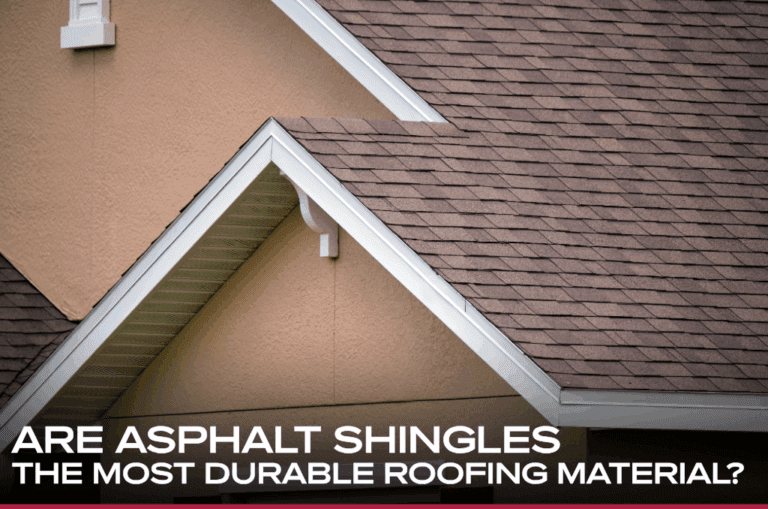How Do I Know if I Need to Replace the Siding?
 Siding is more than just an aesthetic choice for your home—it’s a critical component of protection, insulation, and curb appeal. Knowing when to replace or repair siding can be challenging, but assessing your siding’s condition can save you from expensive, time-consuming fixes later on. If you’re unsure whether you need to replace the siding or if a good repair will suffice, here are some key signs and guidelines to help you make the best decision.
Siding is more than just an aesthetic choice for your home—it’s a critical component of protection, insulation, and curb appeal. Knowing when to replace or repair siding can be challenging, but assessing your siding’s condition can save you from expensive, time-consuming fixes later on. If you’re unsure whether you need to replace the siding or if a good repair will suffice, here are some key signs and guidelines to help you make the best decision.
How to Determine if You Need to Replace the Siding on Your Home
1. Assessing the Appearance and Condition of Your Siding
A simple visual inspection is a great starting point to evaluate the state of your siding. Look for peeling paint, discoloration, cracks, and warping. While minor cosmetic issues, such as faded paint, can be refreshed, significant damage is a sign that your siding might need more than just a repair. Here’s how to recognize the differences:
- Peeling or Fading: Siding that looks worn or faded might just need a repaint or thorough cleaning. However, extensive discoloration or fading often indicates UV damage or wear and tear from weather. If the paint or finish no longer holds, it could be a sign the material itself is deteriorating and may need replacing.
- Cracks and Chips: Small cracks can be patched, especially in wood siding, but numerous or larger cracks are warning signs. If you notice splits or chips, check if they’re isolated to one area. Widespread cracking may mean it’s time for a replacement.
- Warping and Buckling: Warped or buckled siding panels often indicate moisture damage or exposure to extreme temperatures. This can compromise your home’s insulation and protection from the elements. Warping is usually a sign that siding replacement may be necessary.
2. Checking for Moisture Damage
Moisture is one of the siding’s biggest enemies. When water penetrates siding, it can lead to mold, mildew, and rot—all of which can impact the structural integrity of your home. Here’s how to check for signs of moisture damage:
- Rot and Decay: Wood siding is particularly vulnerable to rot. Gently press on suspicious areas; if the material feels soft or crumbly, the wood is likely decayed. Siding with rot should generally be replaced, as it can spread and affect other areas of the structure.
- Mold and Mildew Growth: While a bit of mildew on the exterior can be washed off, extensive or persistent mold can indicate a deeper moisture issue. Mold growth under siding or on interior walls is a red flag that your siding may need replacement.
- Peeling Paint or Wallpaper Indoors: Moisture damage isn’t always visible on the siding itself. Peeling paint or wallpaper inside your home could be a sign of trapped moisture, suggesting that siding isn’t adequately protecting the structure from rain or humidity.
3. Evaluating Energy Efficiency
Siding significantly contributes to your home’s energy efficiency by providing insulation and reducing heat transfer. If you’ve noticed a sudden spike in your energy bills, your siding could be the culprit.
- Drafts and Temperature Fluctuations: Poor insulation from damaged siding may result in cold drafts or temperature variations in different areas of your home. While drafts can often be sealed, temperature fluctuations throughout the home indicate that your siding is likely no longer effective at keeping outdoor elements out.
- High Energy Bills: Inefficient siding may be causing steady increases in energy bills. If your HVAC system is working overtime to maintain indoor temperatures, it might be worth considering a siding replacement for better insulation.
4. Testing for Siding Durability
Durability testing is a simple way to see how well your siding material is holding up over time. Different materials have different lifespans, and understanding how long siding typically lasts can indicate that it could be time to replace the siding on your home.
- Vinyl Siding: Vinyl typically lasts 20–40 years. If your siding is approaching this age, it may be time to consider a replacement. Over time, vinyl becomes brittle and may crack or fade.
- Wood Siding: Wood has an average lifespan of 20–30 years, though it requires more maintenance. If you notice extensive rot, insect damage, or warping, replacement is often the best choice.
- Fiber Cement and Composite Siding: These types of siding are built to last, often up to 50 years or more. However, if you spot extensive cracking, moisture damage, or persistent mold growth, replacing individual panels or sections may be necessary.
5. Examining for Structural Shifts
Structural issues around windows, doors, or the foundation can indicate siding problems. When siding fails, it can lead to weakened structural elements, allowing water or pests to enter and cause damage.
- Gaps and Seams: Inspect around windows and doors. Gaps or loose siding can allow moisture and pests to infiltrate. While minor gaps can be sealed, larger, widespread gaps may suggest the siding no longer fits well and should be replaced.
- Sagging or Leaning Siding: If you notice sections of your siding leaning or sagging, this is a strong indication that the structural integrity is compromised. In most cases, sagging siding will require replacement to ensure adequate protection.
6. Dealing with Pest and Insect Damage
Termites, carpenter ants, and other pests are a serious concern, especially for wood siding. Insect damage often goes unnoticed until it becomes extensive.
- Signs of Infestation: Small holes, channels, or tunnels in the siding are often signs of pest infiltration. This kind of damage weakens the material and can lead to larger structural issues.
- Frequent Pest Problems: If you’re experiencing constant pest issues, even after repairs, your siding could be attracting them due to rot or damage. Replacing the siding with a pest-resistant option may help alleviate the issue.
7. When to Opt for Repairs Instead
Sometimes, siding problems are localized and do not warrant a total replacement. If only a few boards are affected or if damage is due to a single event (like a storm), you may only need repairs.
- Minor Cracks or Holes: A few small cracks or holes can often be patched or filled. As long as the damage hasn’t penetrated the underlayers, a repair should be sufficient.
- Isolated Mold or Mildew Spots: Clean and treat it promptly if mold or mildew growth is limited to a specific area. A repair will often suffice unless the growth has permeated deep into the siding material.
Opting for repairs can extend the life of your siding and save on costs, but it’s essential to act quickly. Neglecting minor issues can lead to larger, more expensive repairs—or even the need for a full replacement.
Pressure Point Roofing is Your Trusted Expert for Siding, Windows, Roofs, and More
Your home’s siding serves as a first line of defense against the elements, so keeping it in optimal condition is essential. If you’re still unsure whether you need to replace the siding or budget for repairs, consider a professional inspection for an accurate assessment.
If you’re ready to restore or upgrade your home’s exterior, contact Pressure Point Roofing for expert advice and professional services. Our experienced team can help you determine the best solution for your siding, windows, and roofing needs. Don’t wait until minor issues become big problems—contact us today to protect and beautify your home!
Schedule a Consultation
By submitting this form, I agree to receive calls and text messages (including those sent using automated technology) from Pressure Point Roofing, LLC and its representatives at the number provided. Message and data rates may apply. Message frequency may vary. Consent is not required as a condition of purchase. Reply STOP to unsubscribe at any time.
Related Content
Partners and Awards














